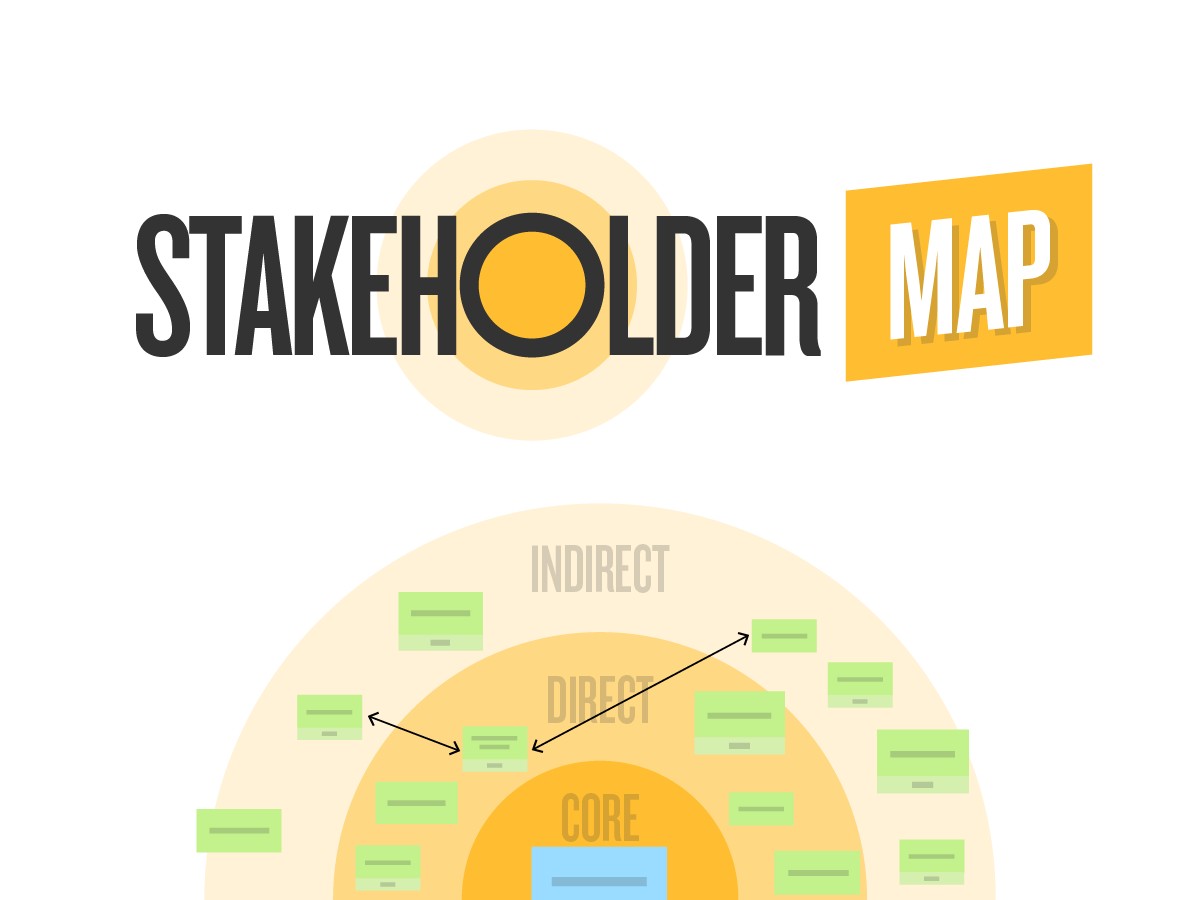Stakeholder Map: Classify any project’s stakeholders
Published on February 14, 2025
Stakeholder Map: Classify any project’s stakeholders


In project management, it’s essential to identify in advance the people and entities that will be affected by your project, and might have an influence on it. Stakeholder mapping is a simple and effective design thinking method that lets you create and visualize the network of stakeholders surrounding your project and your team. That way, there’s no unpleasant surprises, both for you and for stakeholders!

Are you managing a project, and do you need to identify and categorize the stakeholders involved, and basically anyone who will have an impact on your production? Look no further! The Stakeholder Map template is just what you're looking for.
The term “project stakeholders” refers to everyone involved in a project. Indeed, project management does not just involve team and production management. It’s about managing the stakeholders around you, too. The future actions or initiatives that you plan can affect a multitude of different stakeholders: one or several other teams within your organization, suppliers, customers, the media, etc.
As a team, use stakeholder mapping to place them on the map according to their level of influence, and see if they’re connected to each other, and how they depend on each other. This simple design thinking method helps you get an overview of all the people likely to play a role in your project.


The Stakeholder Map is a visual tool to better identify the stakeholders of a project, and their level of influence.
First of all, the foundation of good project management is being able to anticipate any issues to do with negative influence or competition, to avoid them and get closer to your goals. But it can also be really useful to know about possible the things having a positive influence on your project. This is where stakeholder mapping comes into its own. You will be able to clearly see everything that can influence the project, from near or far.
What's more, using this design thinking method will give you an opportunity to transform your ideas and projects into real actions. Having a stakeholder map of your project means you can combine the different abilities and skills of all your team members. You won’t forget anything important, because you will take into account everyone's view.
Finally, creating a stakeholder map as a team will also have the benefit of keeping everyone in the team informed (production, communication, management, supply, etc.), including people who don’t work together on a daily basis. This way, every team member involved in the project can have a complete view of it. This results in better teamwork, while building a secure environment for your new project!
First, invite your team members and any external participants to your project on your whiteboard.
Ask all the participants to post their ideas about the stakeholders, according to their level of influence on the project:
Then, work together to make the connections between the different stakeholders, and show them on your stakeholder map using the connectors available at the bottom, in the toolbar. You can choose the shape of the connector, and the direction of the arrow if need be.
And there you have it! You’ve created a real stakeholder map of your project, available for the duration of your project management and even once it’s delivered!
Get inspired by other templates from the same categories
Unlock your teamwork potential